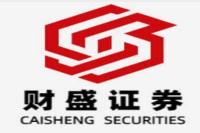中国经济脉搏:政策导向、市场波动与企业展望
元描述: 深入解析中国最新经济政策,包括货币政策调整、消费刺激计划、对外开放战略以及资本市场监管举措,并结合市场表现和重点企业动态,预测未来经济走势。关键词:中国经济,货币政策,消费刺激,对外开放,资本市场,市场波动,企业展望,融资融券,首发经济,一带一路
Hey there, fellow market watchers! Ever feel like you're trying to navigate a minefield when it comes to understanding the Chinese economy? It's a complex beast, constantly shifting and evolving, with a flurry of policy changes, market fluctuations, and corporate news that can leave even seasoned experts scratching their heads. But don't worry, you're not alone! This in-depth analysis cuts through the noise, offering a clear, concise, and human-readable perspective on the current state of affairs. We'll dive deep into recent announcements from the China Securities Regulatory Commission (CSRC), the People's Bank of China (PBOC), and the Ministry of Commerce (MOFCOM), examining their implications for various sectors. We'll look at the big picture – macro trends and policy shifts – while also zooming in on the micro, analyzing specific company performance and prospects. Forget dry, academic jargon; we'll use plain English, relatable examples, and a touch of humor to make this complex topic accessible and engaging. Get ready to gain a powerful understanding of the forces shaping the Chinese economy – you might even surprise yourself with what you learn! Let's get this show on the road!
货币政策与市场稳定:稳增长、稳预期
The Chinese government is clearly pulling out all the stops to stabilize the economy and markets. Recent announcements point towards a more accommodative monetary policy, signaling a willingness to inject more liquidity into the system. This is a significant shift, especially given the recent emphasis on deleveraging. The PBOC's hints at potential rate cuts and reserve requirement ratio (RRR) reductions are music to the ears of many investors, particularly those concerned about slowing growth. This push for "moderate easing" aims to achieve a sweet spot: steady growth, stable employment, and a reasonable rise in prices – a delicate balancing act, to be sure!
But it's not just about throwing money at the problem. This strategy also hinges on effectively managing market expectations. The CSRC's focus on strengthening regulatory oversight across various financial instruments – including margin trading, OTC derivatives, and algorithmic trading – signifies a concerted effort to maintain order and prevent excessive speculation. It's a clear message: we’re aiming for stable, sustainable growth, not a rollercoaster ride. This balanced approach, combining monetary stimulus with robust regulatory measures, is crucial to fostering investor confidence and encouraging long-term investment.
The recent data on M2 (broad money supply) growth, while showing a slight increase, also reveals nuances. The slower growth in M1 (narrow money supply) might indicate some hesitancy in the real economy to fully utilize the available credit. This suggests that targeted measures, directing funds towards specific sectors, might be even more critical in the coming months. It's a complex interplay of factors, and understanding this dynamic is key to predicting the market's trajectory.
刺激消费,扩大内需:首发经济与消费升级
Speaking of targeted measures, the government's focus on stimulating domestic consumption is a game-changer. The push for "consumption upgrading" isn't just about buying more stuff; it's about shifting towards higher-quality products and services. This is where the emphasis on the "first public offering (IPO) economy," or "首发经济," comes in. Encouraging more IPOs, especially from innovative and consumer-focused companies, can inject fresh capital into the market, boost investor confidence, and provide more investment opportunities for individuals. This strategy is not without its challenges. Balancing the need to stimulate growth with the need for sensible regulation remains a tightrope walk.
Moreover, the government’s plans to expand the "trade-in" program for consumer goods aim to revitalize the consumer electronics and automotive markets, which have shown signs of weakness. This initiative, along with the development of diverse consumption scenarios and the expansion of service consumption, showcases a holistic approach to boosting domestic demand. Think of it as a multi-pronged attack on sluggish consumer spending, designed to unleash pent-up demand and power future growth. The success of this relies heavily on consumer confidence and the effectiveness of these policies in reaching the intended market.
高水平对外开放:一带一路与全球合作
China's commitment to expanding high-level opening up is another key element of its economic strategy. The continued emphasis on the Belt and Road Initiative ("一带一路") underscores the country's ambition to deepen its economic ties with the rest of the world. This initiative, while facing its own set of complexities, reflects a long-term vision of global cooperation and mutually beneficial partnerships. The government's strategy also involves expanding both autonomous and unilateral opening-up, gradually broadening the scope of institutionalized opening-up. This means increased participation in global trade agreements and further simplification of regulations to invite foreign investment.
However, the global environment is anything but easy. Geopolitical tensions and protectionist sentiments in some parts of the world could pose significant hurdles. Navigating this complex landscape requires deft diplomacy and a nuanced understanding of global dynamics. The success of China's outward-oriented strategy depends heavily on its ability to build trust, foster collaboration, and maintain its position as a reliable and responsible global partner.
资本市场监管:稳资金、稳杠杆、稳预期
The CSRC's actions are not merely reactive; they reflect a proactive approach to risk management. The intensified scrutiny of margin trading and other leveraged instruments aims to curb excessive speculation and prevent systemic risks. This is crucial in a market that has seen periods of volatility. Strengthening cross-border, on-and-off-exchange, and spot-futures regulatory coordination is key to a comprehensive oversight of the financial system. It's a commitment to creating a fairer, more transparent, and resilient market. It's a tightrope walk between encouraging investment and preventing excessive risk-taking, a delicate balance indeed.
企业表现:保险、证券、房地产与新兴产业
The performance of major companies provides a granular view of the economic landscape. While some sectors, such as insurance and securities, have shown mixed performance, others like renewable energy are witnessing strong growth. The contrasting fortunes of these sectors highlight the diverse forces at play in the Chinese economy.
| Company | Sector | Performance Highlights | Outlook |
|----------------------|-------------|------------------------------------------------------|---------------------------------------|
| China Ping An | Insurance | Strong growth in insurance premiums | Positive, driven by growth in insurance |
| Xinhua Insurance | Insurance | Moderate growth in premiums | Stable, but facing market headwinds |
| China Metallurgical | Construction | Declining new contracts, but strong overseas growth | Uncertain, dependent on infrastructure spending |
| China National Coal | Energy | Growth in coal sales, but declining electricity sales | Moderate, influenced by coal demand |
| Datang New Energy | Renewable Energy | Significant growth in photovoltaic power generation | Positive, fueled by renewable energy growth |
The performance of these companies, and many others, tells a complex story of adaptation, innovation, and resilience. While some sectors face headwinds, others are thriving, showcasing the economy's dynamic nature.
常见问题解答 (FAQ)
Q1: Will the government continue its monetary easing policy?
A1: While the government has signaled a more accommodative stance, the exact extent and duration of monetary easing will depend on various economic indicators and macroeconomic conditions. Expect a data-driven approach, with adjustments made as needed.
Q2: How will the consumption stimulus packages impact the economy?
A2: The success of these packages depends on their effectiveness in reaching consumers and boosting confidence. The impact will likely be gradual, with the full effects taking time to materialize.
Q3: What are the risks associated with China's high-level opening-up policy?
A3: The risks include increased competition from foreign firms, potential capital flight, and vulnerabilities to external economic shocks. However, the benefits of greater integration into the global economy are expected to outweigh these risks.
Q4: What is the outlook for the Chinese stock market?
A4: The market outlook is uncertain, influenced by global economic conditions, domestic policy adjustments, and investor sentiment. Expect volatility while the government implements its stabilization measures.
Q5: How will the increased regulatory oversight impact innovation?
A5: The goal of increased regulatory oversight is to create a stable and trustworthy environment for both established companies and innovative startups. While it might impose some hurdles, it ultimately aims to foster long-term sustainable growth.
Q6: What role will technology play in China's future economic growth?
A6: Technology will be a crucial driver of future growth. The government's focus on technological innovation and digitalization will shape various sectors, from finance to manufacturing and beyond.
结论:机遇与挑战并存
The Chinese economy is undoubtedly facing significant challenges. However, the recent policy announcements demonstrate a clear commitment to stabilizing the economy, stimulating growth, and managing risks. While challenges remain, the government's proactive approach, coupled with its long-term strategic vision, suggests a path to sustainable economic development. The interplay between monetary policy, consumption stimulus, opening-up initiatives, and regulatory reforms will ultimately determine the success of this strategy. Keep your eyes on the data, stay informed, and remember—it's a dynamic situation, so stay tuned for more updates! The journey continues...



